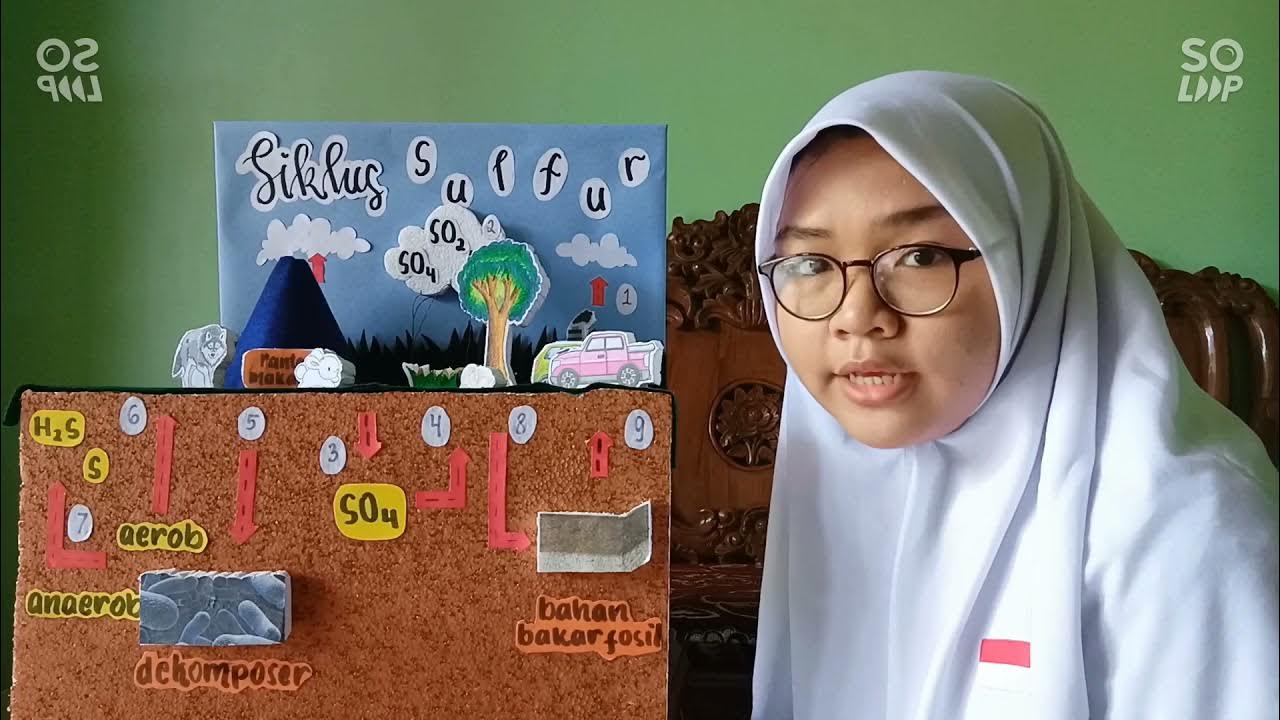Part 5, Pabrik asam sulfat, Bagaimana gas SO2 terbentuk di Smelter tembaga
Summary
TLDRThis video explains the formation of sulfur dioxide (SO2) in the copper smelting process. The process starts with high-concentration copper concentrates being melted and oxidized in a flash smelting furnace. This generates SO2, which is later processed in sulfuric acid plants. The script discusses the role of various furnaces, reagents like silica, and the temperature control in producing sulfur dioxide. It also touches on the conversion of copper matte into pure copper, which is then cast into anodes and refined. The video provides a detailed look at the metallurgical processes involved, especially the role of SO2 in sulfuric acid production.
Takeaways
- 😀 SO2 is formed during the copper smelting process, especially in flash smelting and converting furnaces.
- 😀 The copper concentrates used in Indonesia's smelting processes contain copper levels of 19–27%.
- 😀 In the flash smelting furnace, copper concentrate is melted and oxidized to form matte with a higher copper content.
- 😀 After processing in the smelting furnace, the matte is granulated, ground, and transferred to the flash converting furnace for further purification.
- 😀 The final copper product is in the form of anode blocks, which are then refined through electrolysis to produce nearly 100% pure copper in the form of cathodes.
- 😀 Flash furnaces include two main types: smelting furnaces for melting and converting furnaces for further purification.
- 😀 Sulfur dioxide (SO2) gas is produced from the reaction between copper concentrate and oxygen in the smelting process.
- 😀 SO2 is sent to a sulfuric acid plant where it is processed into sulfuric acid, a byproduct of the metallurgical process.
- 😀 The smelting process involves using reagents like silica (SiO2) to facilitate the production of SO2.
- 😀 Temperature control and the composition of materials in the smelting process are critical to optimizing energy efficiency and the formation of SO2 at lower temperatures.
- 😀 The overall goal of the copper smelting process is to extract and purify copper from ore, with byproducts like SO2 being managed for further industrial use.
Q & A
What is the main topic of the video script?
-The video explains how sulfur dioxide (SO2) is formed during the copper smelting process, particularly focusing on the processes involved in a copper smelter.
Where is the copper concentrate used in the smelting process sourced from?
-The copper concentrate used in the smelting process comes from Papua, Indonesia, and contains copper levels ranging from 19% to 27%.
What is the first step in the flash smelting process?
-The first step is to melt the copper concentrate in a flash smelting furnace, where it is oxidized and converted into matte with a higher copper content.
What happens to the copper matte after it is produced in the flash smelting furnace?
-The copper matte, which contains 60% to 70% copper, is granulated, ground, and then processed in a flash converting furnace where further oxidation occurs.
How is sulfur dioxide (SO2) produced in the copper smelting process?
-Sulfur dioxide (SO2) is produced when oxygen reacts with copper concentrate, particularly in the flash smelting furnace, and further reactions take place in the slag phase.
What is the role of the flash converting furnace in the smelting process?
-The flash converting furnace is where the copper matte is further oxidized and treated with lime (CaO) to produce more SO2 and refine the copper content.
What is electrorefining, and how is it related to copper production?
-Electrorefining is a process in which anode copper, formed from molten copper in the smelting process, undergoes electrolysis to produce high-purity copper cathodes, typically around 100% copper content.
What are the typical temperatures during the smelting and converting stages?
-During the smelting and converting processes, the temperatures typically reach around 1200 to 1300 degrees Celsius, depending on the specific reactions and the composition of the materials.
Why is oxygen enrichment important in the flash smelting process?
-Oxygen enrichment (50-80% oxygen purity) helps in improving the efficiency of the smelting process by increasing the combustion temperature and ensuring better oxidation of the copper concentrate.
How is sulfur dioxide (SO2) used after being produced in the smelting process?
-Once produced, sulfur dioxide (SO2) gas is directed to a gas cleaning area, where it can be further processed, typically in sulfuric acid plants to produce sulfuric acid from the metallurgical off-gases.
Outlines

هذا القسم متوفر فقط للمشتركين. يرجى الترقية للوصول إلى هذه الميزة.
قم بالترقية الآنMindmap

هذا القسم متوفر فقط للمشتركين. يرجى الترقية للوصول إلى هذه الميزة.
قم بالترقية الآنKeywords

هذا القسم متوفر فقط للمشتركين. يرجى الترقية للوصول إلى هذه الميزة.
قم بالترقية الآنHighlights

هذا القسم متوفر فقط للمشتركين. يرجى الترقية للوصول إلى هذه الميزة.
قم بالترقية الآنTranscripts

هذا القسم متوفر فقط للمشتركين. يرجى الترقية للوصول إلى هذه الميزة.
قم بالترقية الآن5.0 / 5 (0 votes)






